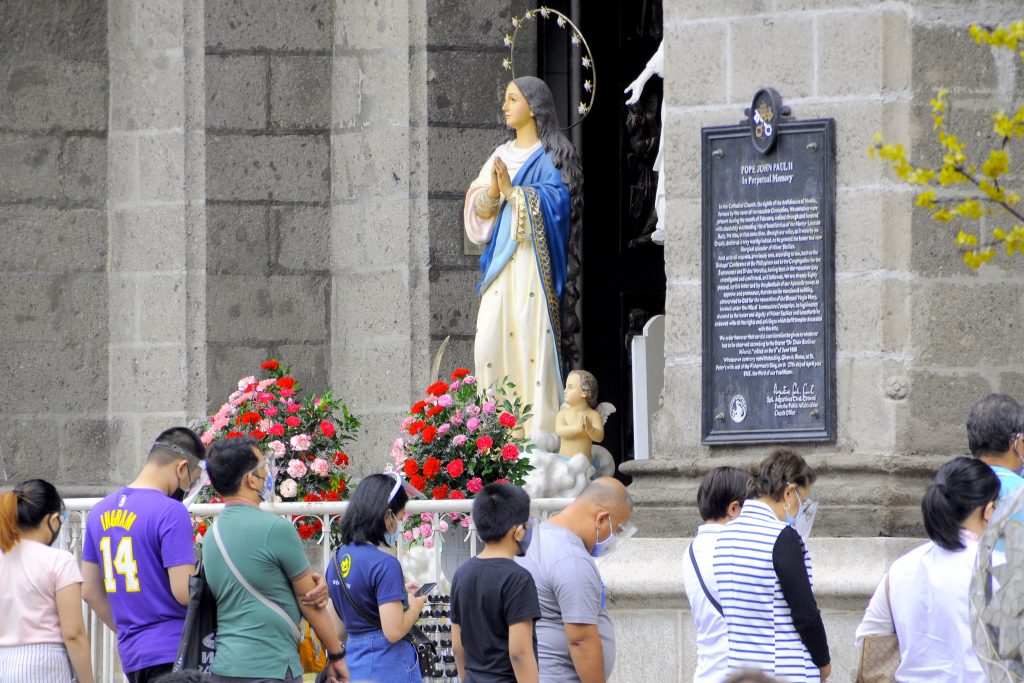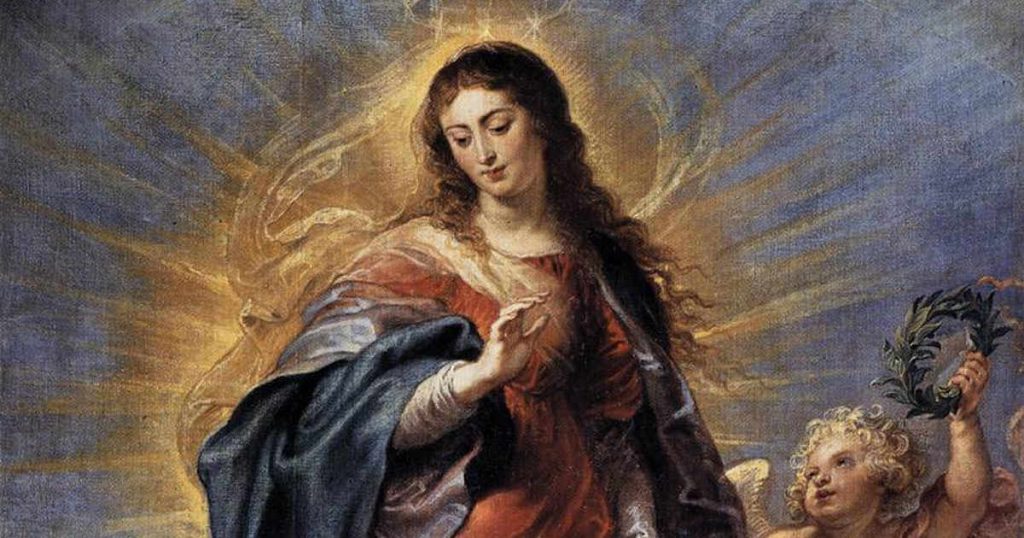
Sometimes there are important moments in history that we try to immortalize from their very start. We try to go as far back as where and how it all began.
Like the Universal Declaration of Human Rights. Not only is the original copy kept in a museum. Even the pen that was used to write it down or the original venue where the idea was first proposed have been preserved.
I think it is like that also with the first Philippine flag. Not only have the first versions of the flag been preserved, but also the needles and the threads that were used to make them, and the paintings or photographs of the women who stitched them together.
Immaculate Conception is somewhat like that for the Catholic Christians. We begin Christmas, not with Jesus but with Mary; not with the conception of Jesus but with the conception of Mary who conceived Jesus. Because we want to immortalize the key moments in our salvation history, we start, not from birth but from conception.
In English, “conception” is not just about the beginning of a pregnancy. The same word is used metaphorically about thoughts that germinate in the minds of people. And so we have the words “conceive” and “concept” as metaphors for thinking and thought. One might say they are not just metaphorical; they are also a literal part of the process of birthing.
Remember the prophet Jeremiah, what he was told by God when he received his calling as a prophet? In Jer. 1:5, we read, “Before I formed you in the womb I KNEW YOU, before you were born I dedicated you, a prophet to the nations I appointed you.”
Jeremiah is saying his prophetic vocation began even before he was conceived in his mother’s womb, that already back then, the Lord “KNEW” him and APPOINTED him.
Because we believe that GOD IS LOVE, we also believe that what comes from genuine love is holy, what is conceived is consecrated.
I remember attending a unique golden wedding anniversary where the couple, during the reception told stories and even had props for their stories for their children and grandchildren who listened attentively. (This was before the time of video productions.)
The couple spoke about how it all began, where they first met each other, when they first felt the “spark of love” that ignited in their hearts for each other. Because they recognize their marriage as a gift from God, they also treat it as an indissoluble bond. They trace it, not from the moment they made their vows in the Church but already from way, way before it.

They recalled everything—the time of the day when they first saw each other, the place and the circumstances that surrounded it, then their first letters to each other, which they both kept, their first date and first kiss, their first photograph in the company of other people. They even had an old calendar with their first date encircled by the husband.
As far as they were concerned, every step that led to their marriage was worth lifting up and consecrating, that every aspect of it had to do with God’s inscrutable ways. They kept their mementos in a little old jewel box, that one might call the “ark of their covenant.”
Since the Conception that we celebrate on this day is not yet that of Jesus but of Mary, in principle the appropriate icon should be St. Anne. I have long thought of suggesting that the feast of St. Anne be celebrated instead on December 8. Perhaps the focus should not even be her womb but the first glance of Joachim and Anne.
Love is indeed a MANY SPLENDORED THING. And so we always try our best to trace its origins from its very first inception. That is what Immaculate Conception is about; it is a celebration of the first spark of God’s eternal love, God’s redeeming love for humankind.
The Church Fathers in fact go to the extent of tracing it as far back as Genesis. That is why we have an icon of Mary stepping on the snake’s head, to suggest that God had already conceived of creating a New Eve from that very moment. She who would not be deceived anymore by the serpent’s lies, and would become the mother of Jesus, the New Adam, the new template for humanity which will realize the Divine plan to make humankind in the image and likeness of God.
The usual icon for the Immaculate Conception has Mary and suggests the moment she said yes to the Father as the spark that started it all. But Pope Pius IX, in 1854, pushed it even further back to Mary’s conception in the womb of St. Anne.
It’s like putting Jesus between two mirrors, one in front of him and one behind him, and seeing a reflection of an infinity of images, you can’t figure out where exactly it all begins.
Immaculate Conception is to say IT ALL BEGINS WITH GOD’S LOVE, and that God’s hand has been at work in this whole story of redemption from the moment of its very first spark.
This is the homily of Bishop Pablo Virgilio David of Kalookan for Dec.8, 2020, Tuesday of the 2nd Week of Advent, Feast of the Immaculate Conception, Luke 1:26-38
Source: Licas Philippines
0 Comments